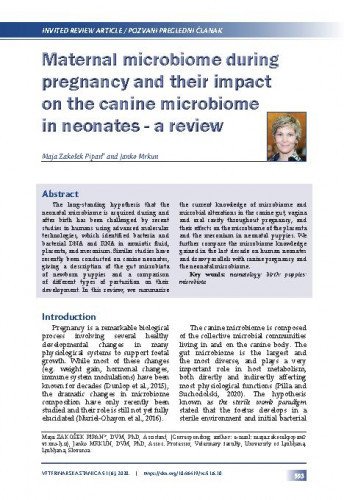Tijekom povijesti postojale su teorije o načinu postanka i širenja tuberkuloze. Pret- postavlja se da je M. tuberculosis tijekom po- vijesti ubio više ljudi nego bilo koji drugi pato- geni mikroorganizam. Tuberkuloza je pratitelj ljudskoga roda od prapovijesti do danas. Postoje mnogi arheološki nalazi o tuberkulozi u zemalja diljem Europe stoljeća nakon pada Rimskog carstva. U srednjem vijeku je manje zapisa o tuberkulozi, što ne znači da je ona i nestala. Tijekom XVI. i XVII., stoljeća tuberku- loza je prouzročila gotovo 20 % svih smrtnih slučajeva. Smatra se da je smrtnost sredinom i krajem kasnog XVIII. i početkom XIX. stoljeća porasla, a zatim je počela opadati. Početkom XIX. stoljeća zbog industrijske revolucije i velike migracije ljudi iz ruralnih područja u gradove u potrazi za poslom pogoršavale su situaciju i pridonijele širenju tuberkuloze. Posljedice Prvog i Drugog svjetskog rata početkom i polovicom XX. stoljeća prouzročile su ponovno znatno širenje tuberkuloze. Po- lovicom XX. stoljeća otkriveni su prvi lijekovi protiv tuberkuloze, a kasnije i mnogi drugi te je nastala nova era liječenja i suzbijanja tuber- kuloze. Novi protokol liječenja tuberkuloze, zajedno s BCG-om, u zapadnom svijetu sman- jio je umiranje od tuberkuloze za gotovo 90 %. Tuberkuloza se javlja u svakom dijelu svijeta i postaje najvećim uzrokom smrtnosti odraslih osoba te se svrstava među 10 najvećih uzroka smrti u svijetu. U svijetu godišnje oboli oko 10 milijuna ljudi, više od 1,5 milijun ih umre, a oko 0,5 milijuna je otporno već na prvu liniju lijekova protiv tuberkuloze. Procjenjuje se da je jedna četvrtina (oko 2 milijarde) svjetske populacije zaražena uzročnicima tuberkuloze, a 5 do 15 % njih razboljet će se i razviti aktivnu tuberkulozu.; Throughout history, there were theories about the way it was origin, the spread of tuberculosis. It is assumed that M. tuberculosis has killed more people in human history than any other pathogenic microorganism. Tuberculosis is the companion of the human race from prehistory until today. There are many archaeological evidence of tuberculosis from countries across Europe in the centuries since the fall of the Roman Empire. In the Middle Ages, records of tuberculosis became less frequent, but that did not that it had disappeared. During the XVIth and XVIIth centuries, tuberculosis caused almost 20% of all deaths. Mortality is believed to have risen during the mid - and late XVIIIth and early XIXth century, and then began to decline. At the beginning of the 19th century, the industrial revolution and the large migration of people looking for work from rural areas to towns exacerbated the situation and contributed to the spread of tuberculosis. The consequences of the First and Second World Wars at the beginning and half of the XX century cause a remarkable spread of tuberculosis. In the mid-XX century, the first anti-tuberculosis drugs were discovered, and later many others were discovered, and a new era of treatment and suppression of tuberculosis was created. The new treatment of tuberculosis, together with BCG, in the western world reduced tuberculosis death by nearly 90%. Tuberculosis occurs in every part of the world and remains the greatest cause of adult mortality and ranks among the 10 largest causes of death in the world. In the world, about 10 million people get sick each year, more than 1.5 million die, and about 0.5 million are resistant to the first line of anti- tuberculosis drugs. It is estimated that one fourth (approximately 2 billion) of the world population is infected with the causes of tuberculosis and that approximately 5 to 15% of these people will become ill and develop active tuberculosis.
Sažetak

 Veterinarska stanica : 51,6(2020) / glavni i odgovorni urednik Marko Samardžija.
Veterinarska stanica : 51,6(2020) / glavni i odgovorni urednik Marko Samardžija.